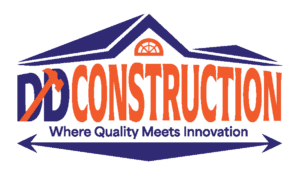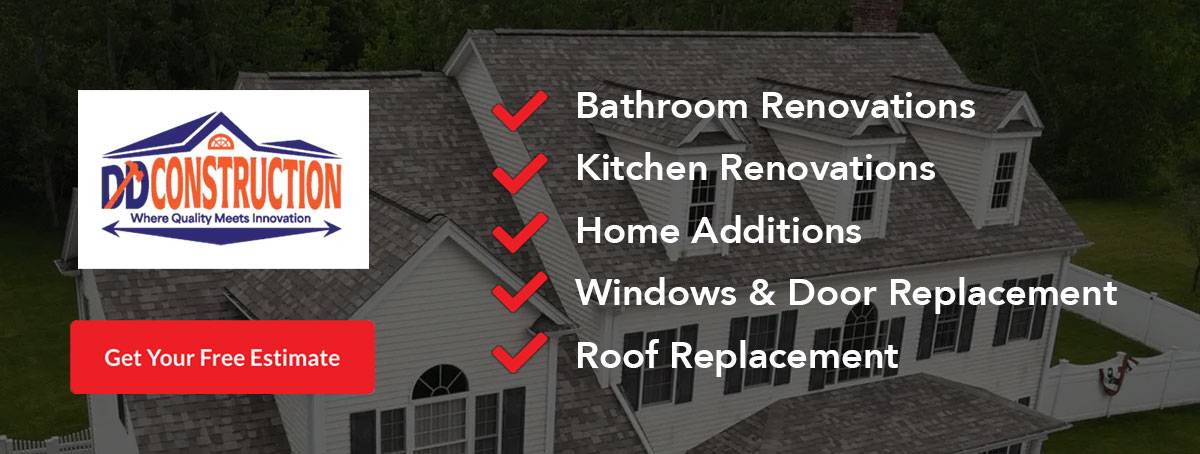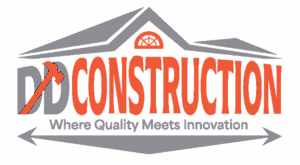How to File an Insurance Claim for Roof Damage in Massachusetts: Step-by-Step Guide for Homeowners
Homeowners in Massachusetts often face unexpected roof damage due to the unpredictable New England weather. Whether it’s high winds, heavy snowfall, or sudden storms, a home’s roof is essential to protecting the entire structure. However, filing an insurance claim for roof damage can be complex, requiring careful documentation, expert assessments, and effective communication with insurance adjusters. This guide provides Massachusetts homeowners with a roadmap to understand which damages are covered, how to prepare and file a claim, and strategies for working with insurance professionals. It covers the types of roof damage typically recognized, the necessary documentation and inspections, the role of insurance adjusters, and tips for hiring reputable roofing contractors. For example, local experts such as ddconstructionma emphasize the importance of thorough documentation and prompt communication with insurers. By following these step-by-step instructions and expert advice from professionals like ddconstructionma, homeowners can reduce delays and achieve fair compensation while preserving the quality and longevity of their home’s exterior.
Transitioning now into the specific aspects of roof damage coverage, the first section details which roof damages are recognized under Massachusetts homeowners insurance policies.
What Types of Roof Damage Are Covered by Massachusetts Homeowners Insurance?
Massachusetts homeowners insurance policies generally cover sudden and accidental roof damage caused by external factors. Unexpected events such as severe storms, high winds, hail, heavy snowfall, fire, or damage from falling trees are typically eligible for claims. These policies distinguish between insured perils—sudden, unexpected events—and gradual deterioration due to aging, neglect, or poor maintenance.
Which Common Roof Damages Qualify for Insurance Claims?
Common qualifying issues include damage from wind-driven debris, structural damage from heavy snow or ice dams, and impacts from hailstorms. Even water seepage that leads to interior damage like mold or drywall deterioration may be covered if it results from a sudden event. Photographic evidence of impact marks, broken shingles, or missing tiles, along with signs of water intrusion, is essential. Additionally, damage to flashing, gutters, and vents caused directly by the same event is usually included.
How Do Weather Events Like Storms and Snow Affect Coverage?
Storms and heavy snow are insurable perils because they occur suddenly. For example, a severe thunderstorm can cause shingle blow-off and heavy snowfall may lead to ice dam formation that causes water leakage. Insurers emphasize that damage related to neglect or gradual wear is excluded. Keeping a timeline—for instance, noting rapid temperature changes following significant snowfall—can support your claim. Winds from nor’easters or hurricanes may also cause collateral damage to roofing materials and underlying structures.
What Are Typical Exclusions in Roof Damage Insurance Policies?
Most policies exclude damage from general wear and tear, faulty maintenance, improper installation, or gradual deterioration. If the roof was already compromised before the incident, the claim may be denied. Other exclusions can include damage from natural disasters like earthquakes or floods, which often require separate coverage. Reviewing your policy is critical to understand these exclusions and to prepare the proper documentation verifying that the damage is sudden and not due to deferred maintenance.
How Do You Prepare to File a Roof Damage Insurance Claim in Massachusetts?

Preparing your claim well before contacting your insurance company can streamline the process and improve approval chances. Key steps include gathering comprehensive documentation, obtaining professional inspections, and understanding expert roles such as those provided by Apex Roofing Solutions. Precision in recording damage details immediately after the event, keeping receipts, and maintaining a clear timeline are essential to avoid underpayment or claim denial.
What Documentation and Evidence Should You Gather?
Gather evidence by taking high-resolution photographs and videos of the damaged areas from close-up and wide angles. In addition, compile maintenance records, receipts, previous inspection reports, and written notes that detail when the damage was first noticed, along with relevant weather reports. This documentation builds a clear narrative that supports your claim.
How to Schedule and Prepare for a Professional Roof Inspection?
Schedule a roof inspection as soon as it is safe to do so. A licensed roofing contractor can provide a technical analysis that may reveal hidden damage. Before the inspection, secure hazardous areas and ensure clear access to the roof. Review your insurance policy for required report types and request that the inspector documents both visible and potential hidden damages. This report strengthens your claim by providing an unbiased evaluation.
What Role Does Apex Roofing Solutions Play in Claim Preparation?
Apex Roofing Solutions assists homeowners by ensuring every detail of the damage is documented and presented according to insurance adjuster requirements. Their expertise in claim procedures, accurate cost estimates, and professional repair proposals can help resolve disputes over damage extent and repair needs, potentially leading to a faster and more favorable outcome.
What Are the Step-by-Step Procedures to File a Roof Damage Claim in Massachusetts?
Filing a roof damage claim in Massachusetts involves a clear, step-by-step process that begins with notifying your insurer and concludes with claim resolution. Following each step carefully helps ensure all aspects of the claim are adequately recorded.
How to Notify Your Insurance Company About Roof Damage?
Immediately notify your insurance company using their claim hotline or online portal. Provide all essential details, including when and how the damage occurred and any evidence you have collected. Keeping a detailed log of phone calls and communications (with dates, times, and the names of representatives) is important for future reference.
What Information Will the Insurance Adjuster Require?
Insurance adjusters generally need photographic evidence, repair estimates, weather reports from the incident date, and any inspection reports. Receipts for emergency repairs and maintenance records also support your case. Providing precise details about roofing materials and the extent of damage, along with a chronology of events, helps the adjuster make an accurate evaluation.
How to Track and Follow Up on Your Claim Status?
After filing the claim, obtain a unique claim number and use it for all communications. Follow up regularly by phone or via the insurer’s online portal to ensure prompt fulfillment of any requests for additional documentation. Keeping written records of follow-up communications helps manage potential delays.
When Should You Expect Claim Approval or Denial?
Claim timelines vary based on damage complexity and documentation thoroughness. Many insurers in Massachusetts process claims within 30 to 45 days. However, additional investigations may extend the timeline. If approved, you will receive a detailed settlement explanation; if denied, you will be given documented reasons and possible appeal avenues. Regular communication with your insurer is key to managing expectations.
How Can You Effectively Work With Insurance Adjusters During Your Roof Damage Claim?

Effective interaction with your insurance adjuster is critical to obtaining fair compensation. The adjuster’s assessment affects the claim’s value, so it is important to establish a cooperative and transparent relationship. Supplying all necessary evidence and asking thoughtful questions can lead to a more accurate evaluation.
What Questions Should You Ask Your Insurance Adjuster?
Ask the adjuster for specifics on required documentation, the criteria used for damage assessment, and the expected timeline for processing your claim. Inquire about additional evidence that might improve your claim and request clarification on how the damage value is calculated. Additionally, ask which common pitfalls to avoid, such as incomplete records, and confirm a primary contact for any follow-up.
How to Advocate for Fair Damage Assessment?
Prepare a detailed report that includes photographs, inspection results, repair estimates, and a timeline of events. Explain clearly how the damage relates to insured perils. If discrepancies occur, calmly present further evidence or request a second independent inspection. Maintaining professionalism while asserting your rights can help ensure that the assessment is accurate.
When Is It Beneficial to Hire a Public Adjuster in Massachusetts?
A public adjuster is valuable in complex claims or when significant differences exist between your repair estimates and the insurer’s evaluation. Working independently on your behalf, a public adjuster can reassess damage and negotiate to secure a fair settlement. Their involvement may expedite resolution and ensure the repair estimate reflects all necessary work.
How to Choose a Reputable Roofing Contractor for Insurance Claim Repairs in Massachusetts?
After your claim is approved, hiring a reputable roofing contractor is key to ensuring repairs meet safety standards and quality expectations. The right contractor, with extensive experience in handling insurance claims, provides quality workmanship and long-term support.
What Credentials and Experience Should You Look for in a Roofing Contractor?
Choose a contractor with a valid state license, proper insurance, and a proven track record of completed projects. Positive customer reviews, testimonials, and case studies related to insurance claim repairs are essential indicators. Experience with various materials such as slate, asphalt, or metal roofing is also important, as it can affect repair costs and durability. Look for warranties on both labor and materials to ensure long-term quality.
How to Verify Contractor’s Insurance Claim Assistance Expertise?
Verify that the contractor is familiar with insurance claim processes by asking about past claim experience and reviewing supporting documentation. Contractors associated with companies like DD Construction often have dedicated teams for claim preparation. Request a free detailed quote that includes both repair costs and any claim assistance services.
What Questions Should You Ask Before Signing a Roofing Contract?
Before signing, confirm the total repair cost, project timeline, and available warranties. Ask about procedures for handling unforeseen damages and if the contractor will coordinate directly with your insurer. Discuss payment terms, communication methods, and review the full contract to avoid unexpected costs.
What Are Common Challenges and Legal Considerations When Filing Roof Damage Claims in Massachusetts?

Filing a roof damage claim can involve bureaucratic and legal challenges. Homeowners may face claim denials, underpayments, or disputes over damage extent. Legal issues arise when the insurer’s interpretation conflicts with your evidence. Understanding your rights and knowing when to seek legal or public adjuster assistance is crucial for a successful resolution.
How to Handle Claim Denials or Underpayments?
If your claim is denied or underpaid, request a detailed explanation and review your policy language. Collect additional documentation, such as a second inspection report or updated repair estimates, then formally appeal the decision. Keeping detailed records of every step is essential. In some cases, engaging a public adjuster or lawyer may be necessary to secure a fair settlement.
When Should You Consult a Lawyer for Roof Damage Insurance Issues?
Consult a lawyer when the claim process stalls, negotiations fail, or significant disputes over coverage interpretation occur. Legal counsel can help determine if your insurer is violating policy terms and assist in drafting formal appeals or taking legal action if needed. This is especially important when large repair sums are involved.
What Are Your Rights as a Massachusetts Homeowner During the Claims Process?
Massachusetts law protects homeowners through the claims process. You have the right to a fair evaluation, clear explanations for claim decisions, and the ability to dispute any undervalued claims. Understanding these rights and engaging in open communication with your insurer can help ensure a prompt and just resolution.
What Frequently Asked Questions Do Massachusetts Homeowners Have About Roof Damage Insurance Claims?
Homeowners in Massachusetts often have questions about the roof damage claims process. Concerns typically include timelines, coverage specifics, repair costs, and what exclusions apply. Clear answers help build confidence and reduce uncertainty.
How Long Does the Roof Damage Insurance Claim Process Usually Take?
Most homeowners experience a claim process lasting 30 to 45 days, though this can extend if additional inspections or expert reviews are needed. Complex cases or disputes over repair estimates may also result in delays, so regular follow-up is recommended.
Can You File a Claim for Roof Damage Caused by Neglect or Wear?
Insurance policies typically exclude damage resulting from neglect, poor maintenance, or natural wear and tear. Claims must be based on sudden and accidental events. Regular maintenance and proper documentation help demonstrate that damage was not due to long-term neglect.
How Much Does Roof Repair Cost After an Insurance Claim?
Roof repair costs after claim approval depend on damage extent, roofing materials, and current labor rates. Repairs can range from a few thousand dollars to tens of thousands for full replacements. Obtaining multiple estimates ensures that the settlement aligns with actual repair costs.
What Are the Benefits of Using Apex Roofing Solutions for Your Insurance Claim?
Apex Roofing Solutions offers comprehensive inspections, accurate damage assessments, and thorough documentation that can improve your claim’s outcome. Their transparent communication and expertise in negotiating with insurers help ensure that you receive fair compensation.
Should I Consider Getting a Public Adjuster if My Claim is Disputed?
If there is a dispute over the damage assessment or settlement amount, hiring a public adjuster can be beneficial. They work independently to reassess damage and negotiate with insurers, potentially increasing the final settlement despite the additional fee.
Detailed Lists and Tables
Below are detailed lists and a table that summarize key steps and considerations for navigating the roof damage claim process.
List 1: Top 7 Steps for Preparing Your Roof Damage Insurance Claim
- Document the Damage – Capture Clear Evidence Take high-resolution photos and videos of the damage immediately, including close-ups and wide shots.
- Review Your Insurance Policy – Understand Your Coverage Read your policy to identify covered perils and exclusions, noting any conditions that may affect your claim.
- Gather Supporting Documentation – Compile Maintenance Records and Receipts Collect records, receipts, and previous inspection reports to show the roof was well maintained before the damage occurred.
- Schedule a Professional Roof Inspection – Obtain Expert Assessments Hire a licensed contractor to inspect and document all damage for an unbiased evaluation.
- Notify Your Insurance Company Promptly – Report the Incident Report the damage immediately and provide a clear account with all supporting evidence; keep a detailed log of communications.
- Prepare a Detailed Timeline – Outline the Sequence of Events Create a chronology linking the damage to a specific event, which supports your claim.
- Engage a Public Adjuster or Roofing Contractor – Seek Professional Assistance If needed, hire a public adjuster or work with a reputable roofing contractor to help with documentation and negotiations.
List 2: Key Questions to Ask Your Insurance Adjuster
- What specific documents are required to support my roof damage claim?
- How is the damage valuation process conducted?
- Can I submit additional evidence if new damage is discovered?
- What timeline should I expect for the claim’s resolution?
- Will my claim be affected by any ongoing maintenance issues?
- How do repairs get approved and coordinated with the contractor?
- Who can I contact if I encounter difficulties during the claim process?
List 3: Top 7 Qualities to Look for in a Roofing Contractor
- Valid Licensing and Insurance – Ensure Compliance and Protection
- Proven Experience with Insurance Claims – Streamline the Process
- Positive Customer Reviews and Testimonials – Validate Their Reputation
- Detailed Written Estimates – Transparency in Pricing
- Comprehensive Warranty Offerings – Assurance for Long-Term Quality
- Professional Communication and Punctuality – Efficient Service
- Expertise in Various Roofing Materials – Versatility and Quality
List 4: Top 7 Legal Considerations When Filing a Roof Damage Claim
- Understand Your Policy’s Fine Print – Familiarize Yourself with Terms
- Document All Communications – Keep a Detailed Record
- Know Your Rights as a Homeowner – Legal Protections
- Be Aware of Common Denial Reasons – Prepare for Challenges
- Consider Legal Counsel for Complex Claims – Seek Professional Advice
- Review the Claim Appeal Process – Understand How to Contest a Denial
- Evaluate the Need for a Public Adjuster – Expertise in Negotiation
Table: Comparison of Key Steps in Filing a Roof Damage Claim
| Step in Process | Primary Action | Key Benefit | Example/Supporting Point |
|---|---|---|---|
| Documenting Damage | Photos, videos, written notes | Provides concrete evidence of sudden damage | High-resolution images capture damage immediately |
| Reviewing Policy | Read and understand policy wording | Clarifies covered perils and exclusions | Helps differentiate between sudden damage and wear |
| Gathering Supporting Documents | Compile receipts and maintenance records | Strengthens claim credibility | Records show proactive home care |
| Scheduling a Professional Inspection | Hire a licensed roofing inspector | Offers expert damage assessment | Independent reports validate extent of damage |
| Notifying the Insurance Company | Immediate phone call and online submission | Initiates timely processing of the claim | Early notification prevents delays |
| Tracking Claim Progress | Regular follow-ups using claim number | Ensures smooth communication | Portal follow-ups help monitor claim status |
| Engaging a Public Adjuster/Contractor | Professional assistance with negotiations | Optimizes settlement and repair coordination | Experienced contractors boost claim quality and accuracy |
This table summarizes the most critical steps to undertake when filing a roof damage claim, reinforcing a proactive strategy for success.
Frequently Asked Questions
Q: What types of roof damage are most likely to be covered by my Massachusetts homeowners insurance? A: Insurance typically covers sudden, accidental damage from severe weather events—including hail, wind, heavy snowfall—as well as fire damage and impacts from falling objects. Gradual decay, poor maintenance, or wear and tear are generally excluded.
Q: How soon should I notify my insurance company after roof damage occurs? A: Notify your insurer immediately after discovering damage to preserve evidence and ensure prompt processing. Delays can lead to disputes about the timing or cause of the damage.
Q: Why is it important to have a professional roof inspection before filing my claim? A: A professional inspection provides an expert evaluation that quantifies the damage and uncovers hidden issues. This detailed report is essential for substantiating your claim with the insurance company.
Q: What should I do if my insurance claim is denied or underpaid? A: Request a detailed explanation, review your policy, and collect further documentation, such as a second inspection report. If necessary, formally appeal the decision or consult a public adjuster or lawyer.
Q: How can hiring a public adjuster improve my roof damage claim outcome? A: Public adjusters work exclusively for homeowners to reassess damage and negotiate with insurers. Their involvement can result in a higher settlement and a faster, fairer resolution.
Q: What rights do I have as a Massachusetts homeowner if my roof damage claim is mishandled? A: Massachusetts law protects homeowners by ensuring a fair evaluation, access to detailed claim information, and the right to dispute undervalued claims. Legal counsel is available if your rights are not respected.
Q: How do I select a reputable roofing contractor for repairs after my claim is approved? A: Verify that the contractor has proper licensing, insurance, and a strong track record with insurance claims. Request written estimates, warranties, and references to ensure quality workmanship and reliable service.





